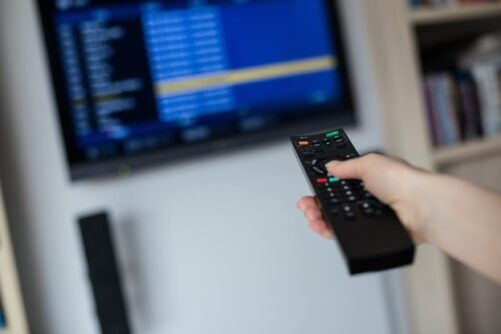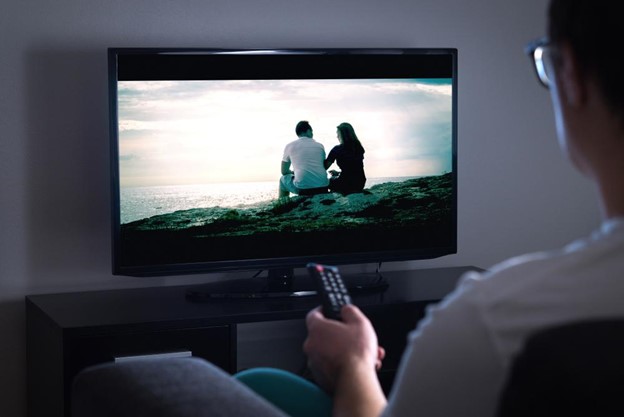We’ve all been there. You’re watching your favorite movie, and suddenly, a dimly lit scene appears on the screen. You’re squinting to see what’s happening – is that the main character? Who’s behind them? Is it a shadow or a villain?
Why is my screen so dark?!
Nothing ruins a good show like a dark screen. When the lighting of today’s movies and television shows already trends towards a dark and moody atmosphere, it can ruin your viewing experience if your TV screen also appears darker than normal.
So how do we fix a dim screen and create an optimal viewing experience no matter what TV genre or movie you’re watching? If you wonder why your TV screen is darker than normal and how you can fix it, read on to discover tips and tricks for navigating this common issue.
What Kind of Darkness Are You Seeing?
Not all screen darkness is created equal. Before we dive into some at-home fixes, we want you to take a good look at your screen. Is it uniformly dark or only dark on one side or in certain places?
If the screen is dark on one side or in certain places, you may be in for a bigger repair job or even a full replacement.
If you find yourself in this scenario, start by checking your HDMI cable for damage. You can pick up a new HDMI cable from most big box retailers and replace it quickly and easily.
Once you’ve made the switch to your HDMI cable, your TV should snap back to uniform brightness. If this doesn’t happen, then your best course of action is to take it to a repair shop for a comprehensive diagnosis.
If your screen is uniformly dark, you have a few more options for fixing it. Let’s continue!
Check Your Ambient Lighting Settings
Many television sets have ambient light detection which adjusts your screen’s brightness with the room’s brightness.
For instance, if you’re watching television while the sun is streaming through your windows, the ambient lighting sensor will adjust your screen to be at full brightness. Conversely, if you’re watching television while the sun is setting or it’s dark out, your television’s lighting sensor will dim the screen in response.
The point of ambient light detection is to adjust the brightness, so you have a comfortable viewing experience regardless of the ambient room light. While many people enjoy this smart response, some may find the ambient lighting sensor overly reactive, or find that it dims the screen too much for their liking.
How to Disable the Ambient Lighting Sensor in Your TV
At this point, you may want to consult your manual. If you’re like many people and have tossed the manual along with the box, or it’s gotten buried in your home’s junk drawer never to be found again, then you can usually download the manual online. Just Google search the make and model of your TV and the word “manual,” and you’ll usually find a pdf document.
That said, if you’d rather just dive right in, you’ll usually find your TV’s ambient lighting settings under the menu option of your TV. You can navigate to ambient lighting settings and turn them off from the menu.
This should prevent your television from automatically dimming and brightening as the room light changes.

Check Your Television’s Picture Mode
Today’s televisions have suggested picture modes to help optimize your viewing experiences. Here are some of the most common and what they do to the brightness of your screen:
Standard: If your TV is new out of the box, and you haven’t adjusted any settings, it will most likely be set to Standard picture mode. In Standard mode, your TV screen will have an average contrast, brightness, and sharpness, and the TV picture may appear cooler in color (on the blue side of the spectrum).
Vivid/Dynamic: On the opposite side of the spectrum is the Vivid picture mode. When you switch your picture setting to vivid, you should automatically notice an increase in brightness, contrast, and sharpness. While this picture setting will undoubtedly increase the overall brightness of your screen, some people note that it can cause eye strain and/or make your content feel unnatural.
Movie/Cinema: Most of us enjoy watching movies in a dark or dimly lit environment. With movie/cinema picture mode, the screen is dimmed to match the lighting in the room by reducing the backlight in your television. Some people may find that Movie/Cinema mode makes the TV picture appear warmer or golden in tone. This is because the white balance for most movies is on the warm side rather than a cool white, making the screen appear noticeably different than your laptop or cell phone. The benefit of using this mode is that it may reduce eye strain and enhance shadowy areas on the screen.
The bonus to checking your picture mode presets is that your television will automatically showcase the difference in brightness without making additional adjustments. This lets you quickly decide which mode best suits you by comparing your options.
Whatever you do, give your eyes some time to adjust to the picture mode you select. What may appear too warm (movie mode) or too bright (vivid) may balance the more you watch.
Adjust Your Brightness Setting
Again, you may want to consult your manual to navigate your screen’s brightness setting. Usually, you can access them from the menu under the picture or system settings.
Once you’ve found your TV’s brightness setting, you can adjust the following outputs: backlight, contrast, brightness, sharpness, and color.
A good place to start is with screen brightness. If your TV screen is too dark, tap the up arrow and watch the brightness increase, or vice versa.
Of course, when you boost brightness, you may also want to adjust the picture’s dynamic contrast so you don’t wash out the shadows in your TV show or movie. Adjusting the contrast will ensure that dark colors remain true to form rather than appearing gray or muddied.
Check Your Power Saving Mode
As we all become more aware of our environmental footprint, television manufacturers are also doing their best to reduce their impact.
That’s why many televisions now come with a power-saving mode option. In this mode, your television will limit its power consumption. While in this mode, your television may also automatically adjust the picture mode in addition to other TV settings.
If you want to avoid these automatic picture adjustments, you’ll have to disable Power-Saving mode. Usually, this mode is defaulted to “On” by all manufacturers, so you’ll have to navigate to your television’s menu to turn it off manually.

Let’s Talk About HDMI Cords Again
We know we’ve already briefly discussed HDMI cords, but a damaged cord can also negatively impact your overall screen brightness. HDMI cords transfer high-definition video and audio from one device to another – in this case, from your cable or satellite box and/or your Blu-ray player to your television.
If your HDMI cord is damaged, whether or not it’s obvious to the eye, the quality of audio or video transferred from your device to your TV may not be the best. A new HDMI cord ensures that it functions at the highest level and may fix any perceived issues.
It may go without saying, but keep the receipt for your new HDMI cord. If you switch the new one with your old one and find no difference in the brightness level, most retailers will issue a refund or a store credit on your purchase so long as you have your receipt.
Last but Not Least, Check Your Source Devices
If you’ve tried switching picture modes, manually adjusting brightness, and replacing the HDMI cord and still haven’t had any luck, one of the last things to consider would be the health of your source devices.
It could be the case that your devices are damaged and, therefore, not sending the proper signals through the HDMI cord to your screen.
While this scenario may be unlikely, it is worth investigating.
When to Take Your TV in for Repairs
This is a tricky question to answer, as television repairs can be costly. Perhaps the simplest advice is this: if you’ve tried all of the above-mentioned home remedies and are still unsatisfied with your television’s brightness level, it may be time to recruit a professional.
They can best advise on whether or not repairs may be required (for instance, to your television’s backlight) and provide input on optimal brightness and picture settings for the type of movie or TV show you tend to watch.
Final Thoughts
In addition to trying the above tips and tricks, another option is investing in quality drapes or blinds to reduce ambient lighting in your room overall. Glare can often masquerade as darkness, and a quality window covering can significantly limit its effects.
No one likes to squint through their favorite show – it hurts your eyes, reduces your overall enjoyment of the program, and, maybe worst of all, can give you a headache. Unfortunately, suffering through a dim screen is a common issue that almost every television owner will experience during their lifetime.
Next time you wonder why your television screen is so dark and how to fix it, we hope you’ll remember the advice in this article and return to it as needed. We’re confident that you’ll be able to address your concerns in no time.

